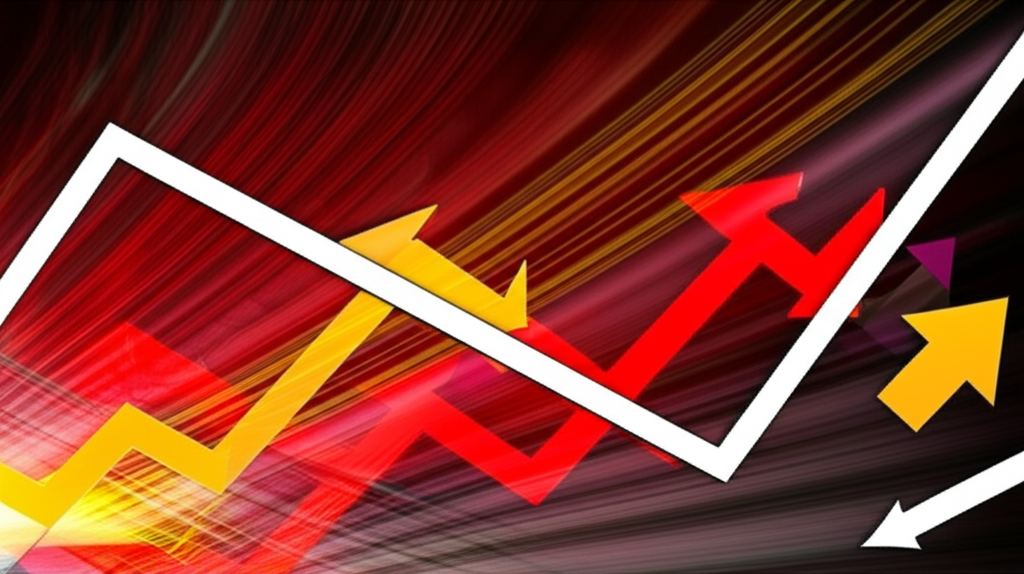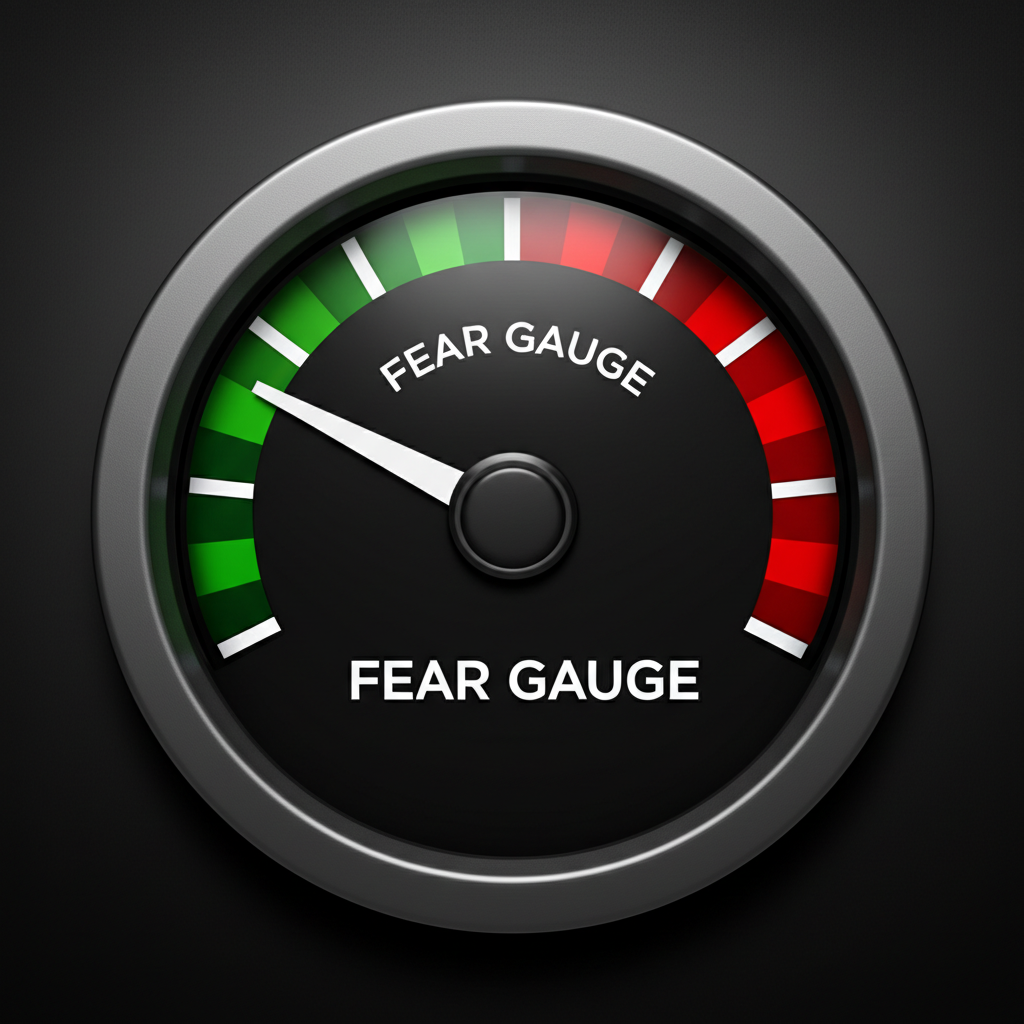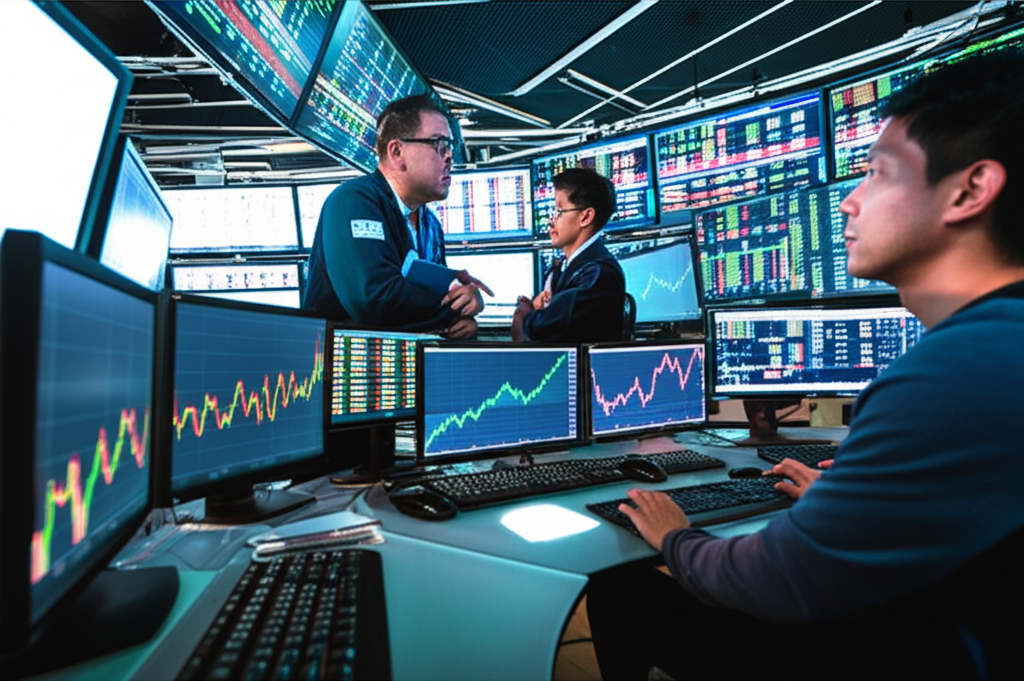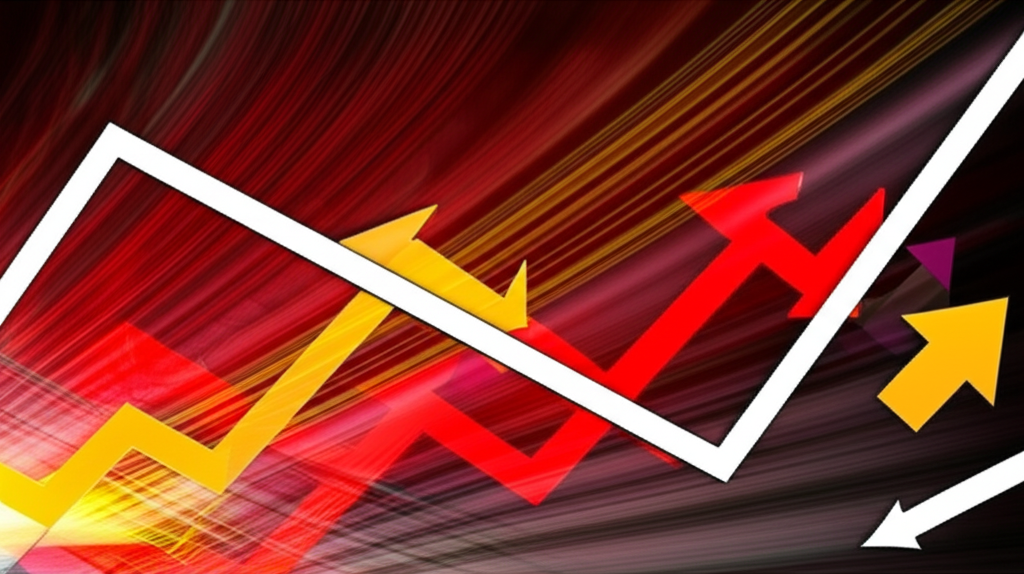What is the VVIX Index? The “VIX of VIX” Explained
For those navigating the emotional undercurrents of financial markets, the VIX Index has long served as a trusted barometer of investor anxiety. But beneath that surface-level reading lies a more sophisticated metric—one that reveals not just fear, but the uncertainty about how much that fear might swing in the near future. Enter the VVIX Index: a second-order volatility gauge that measures the expected 30-day volatility of the VIX itself. It doesn’t track stock market turbulence directly; instead, it quantifies how wildly traders expect the “fear index” to fluctuate over the coming month.

Think of it this way: if the VIX reflects the market’s pulse, the VVIX measures how erratic that heartbeat might become. Officially known as the CBOE Volatility of Volatility Index, the VVIX is derived from real-time pricing data on VIX options. When traders rush to buy calls or puts on the VIX—often as a hedge against sudden market swings—they drive up option premiums, which in turn pushes the VVIX higher. This index, maintained by the Chicago Board Options Exchange (CBOE), offers a unique lens into the expectations of volatility traders, revealing when uncertainty about volatility itself is escalating.
VVIX vs. VIX: Understanding the Key Differences
Though they sound similar and are deeply interconnected, the VIX and VVIX serve distinct analytical purposes. The VIX captures the market’s consensus on how much the S&P 500 will fluctuate over the next 30 days—an indicator of current risk sentiment. The VVIX, however, steps one level deeper: it reflects how volatile that very sentiment is expected to be. In essence, it’s not about how fearful investors are, but how unstable their fear appears to be.
The technical foundations of the two indices differ significantly. The VIX is computed using a basket of S&P 500 (SPX) options across various strike prices and maturities, synthesizing them into a single number that represents implied volatility. The VVIX, by contrast, applies the same mathematical framework—but to VIX options. This creates a recursive structure: the VIX measures fear in equities; the VVIX measures uncertainty about that fear.
This structural difference often results in a predictive relationship. Because the VVIX can react to shifts in options demand before the VIX moves sharply, it sometimes acts as an early warning system. For example, during periods when institutional traders begin positioning for potential market turmoil, VIX option activity may spike—lifting the VVIX—even before the broader market shows signs of stress.
Below is a clear breakdown of their core distinctions:
| Feature | VIX Index | VVIX Index |
|---|---|---|
| What It Measures | Expected 30-day implied volatility of the S&P 500. | Expected 30-day implied volatility of the VIX Index. |
| Underlying Asset | S&P 500 (SPX) options. | VIX options. |
| Typical Range | 10-20 (calm), 20-30 (elevated), 30+ (high stress). | 75-85 (complacency), 110+ (high uncertainty). |
| Interpretation | The market’s current level of fear. | The market’s expectation of how fear will change. |
How to Interpret VVIX Levels and Charts
Interpreting the VVIX requires context. Unlike traditional indicators with fixed thresholds, its value gains meaning only when viewed against historical patterns and concurrent market conditions. A chart tracing the VVIX’s movement over time is indispensable for spotting extremes and transitions in trader psychology.

Low VVIX (e.g., below 80–85)
When the VVIX dips below 80, it typically signals a period of calm in volatility trading. Options markets show little appetite for protection or speculation on large swings in the VIX. This often aligns with steady equity gains and low realized volatility—conditions seen during prolonged bull markets. However, persistently low readings can also hint at overconfidence. Just as prolonged low VIX levels have preceded sharp corrections, extremely subdued VVIX values may suggest investors are underestimating tail risks, leaving portfolios exposed to unexpected shocks.
High VVIX (e.g., above 110–120)
Elevated VVIX levels point to heightened anxiety about where volatility is headed. Traders are paying steep prices for VIX options, betting on dramatic shifts in market fear. These spikes frequently occur during or just before major market dislocations—think of events like the 2020 pandemic crash or the 2022 rate-hike turbulence. A reading above 120 is considered elevated, while levels exceeding 150 are rare and usually reserved for moments of systemic panic.
Spikes in VVIX
Perhaps the most telling signal comes from sharp, sudden surges in the VVIX. These spikes often reflect a surge in demand for volatility hedges, typically as institutions scramble to protect against accelerating downside momentum. Historically, such spikes have coincided with market capitulation—the moment when fear peaks and selling pressure begins to exhaust itself. For contrarian investors, these episodes can mark potential turning points, offering clues about impending reversals in the S&P 500.
The VVIX/VIX Ratio: A Powerful Market Sentiment Indicator
While the VVIX stands on its own as a valuable tool, many professional traders enhance its utility by examining the VVIX/VIX ratio. This simple calculation—dividing the current VVIX value by the current VIX level—normalizes volatility expectations relative to prevailing fear levels. The result is a dynamic sentiment gauge that adjusts for market context.
A high ratio indicates that traders are willing to pay a premium for VIX options despite the current state of market volatility. This often occurs when there’s widespread anticipation of a breakout in fear, even if the VIX hasn’t yet spiked. Such conditions are commonly observed near market bottoms, where panic-driven hedging drives up the cost of protection. Conversely, a low ratio suggests apathy—volatility insurance is cheap relative to current fear levels, which may reflect complacency ahead of a potential downturn.
For active traders, platforms like TradingView allow real-time tracking of this ratio, enabling timely identification of sentiment extremes. At Moneta Markets, advanced volatility analytics—including VVIX and its derived ratios—are integrated into proprietary risk models, helping clients anticipate shifts in market structure before they fully materialize.
How to Gain Exposure to VVIX: Futures, Options, and ETFs
One of the most common misconceptions among investors is the belief that the VVIX can be traded directly. Like the VIX, it is an index—a theoretical construct based on option pricing—not a financial instrument. There are no exchange-traded futures or options contracts tied directly to the VVIX. Any claims otherwise should be treated with caution.
VVIX Futures and Options
Despite growing interest, no futures or options on the VVIX currently exist. The closest avenue for expressing a view on VVIX dynamics is through the VIX options market. Since the VVIX is derived from the prices of these options, buying or selling VIX calls and puts allows traders to take positions on future volatility swings. For instance, if you believe the VVIX is poised to rise due to increasing uncertainty, purchasing out-of-the-money VIX calls could be a strategic move.
VVIX ETFs
Similarly, there are no ETFs or ETNs that track the VVIX index. Products like VXX or UVXY are often mistaken for volatility benchmarks, but they follow VIX futures—not the spot VIX or VVIX. These funds are subject to structural decay due to contango in the futures curve and do not replicate the behavior of the VVIX. Investors seeking exposure to volatility dynamics should understand these nuances, especially when evaluating platforms like Moneta Markets that offer access to sophisticated derivatives with transparent execution.
Common Mistakes to Avoid When Using the VVIX
Despite its insights, the VVIX is often misused, leading to flawed trading decisions. Recognizing these pitfalls can dramatically improve its effectiveness as an analytical tool.
Mistake 1: Treating it as a perfect timing tool.
The VVIX excels at identifying extremes in sentiment, but it doesn’t provide precise entry or exit points. A high reading can persist for weeks during volatile regimes, and a low reading doesn’t guarantee an imminent rally. Used in isolation, it can generate false signals. The key is to combine it with price action, volume trends, and macroeconomic data for a more robust outlook.
Mistake 2: Ignoring the VIX context.
A VVIX of 115 means something very different when the VIX is at 18 versus when it’s at 40. At low VIX levels, a rising VVIX may simply reflect renewed attention to tail risks. At high VIX levels, it could signal accelerating fear. The VVIX/VIX ratio helps contextualize these readings, but deeper analysis is always warranted. At Moneta Markets, analysts emphasize cross-referencing both indices within broader market frameworks to avoid misleading interpretations.
Mistake 3: Confusing VVIX with tradable assets.
Many investors mistakenly assume that a spike in the VVIX is a direct buy signal for volatility ETPs. However, these products don’t mirror the VVIX—they track futures contracts that behave differently due to roll yield and term structure effects. Relying on the VVIX to time trades in UVXY or similar funds without understanding their mechanics can lead to disappointing results. A more effective approach involves using VIX options or structured products offered through advanced brokers.

Conclusion: Key Takeaways
The VVIX Index is more than a niche metric—it’s a critical layer in the hierarchy of market sentiment analysis. By measuring the expected volatility of the VIX, it offers a forward-looking perspective on the stability of investor fear. When interpreted correctly, it can illuminate hidden shifts in trader psychology, often before they manifest in broader market moves.
- The Core Concept: The VVIX measures the 30-day implied volatility of the VIX Index—making it a “volatility of volatility” indicator.
- A Leading Indicator: It frequently moves ahead of the VIX, offering early signals of changing sentiment and potential market inflection points.
- The VVIX/VIX Ratio: This normalized metric helps identify periods of excessive complacency or panic, often correlating with market tops and bottoms.
- Not Directly Tradable: While the VVIX itself can’t be bought or sold, its signals can inform trades in VIX options and other volatility instruments available through platforms like Moneta Markets.
Frequently Asked Questions (FAQ)
What is considered a high or low VVIX level?
While there are no official thresholds, market analysts generally consider a VVIX level below 80-85 to be low, indicating complacency. A level above 110-120 is considered high, signaling significant uncertainty and fear about future volatility. Extreme spikes can exceed 150 during major market crises.
Can you trade the VVIX Index directly?
No, you cannot trade the VVIX Index directly. It is a calculated index, similar to the VIX or the S&P 500. Investors who want to act on VVIX signals typically trade VIX options, as the VVIX is derived from their prices.
What is the relationship between the VVIX and the S&P 500?
The VVIX has a strong inverse relationship with the S&P 500. Typically, when the S&P 500 falls, fear (VIX) rises, and uncertainty about that fear (VVIX) also rises. Spikes in the VVIX often coincide with major bottoms in the S&P 500, as they can signal peak panic or capitulation among investors.
How is the VVIX calculated by the CBOE?
The VVIX is calculated using the CBOE’s VIX methodology to a portfolio of at-the-money and out-of-the-money VIX options. As described by financial resource Investopedia, it essentially applies the VIX formula to the options on the VIX itself to derive the 30-day implied volatility of the VIX Index.
Does a high VVIX mean the market is going to crash?
Not necessarily. A high VVIX means that the market expects the VIX to be very volatile. While this condition is often present during market crashes, it is not a perfect predictor. It’s an indicator of high uncertainty and risk, signaling that conditions are ripe for large market moves in either direction. It’s a warning sign, not a guarantee of a crash.
What is the VIX/VVIX ratio and how do traders use it?
The VVIX/VIX ratio (note: it’s typically written as VVIX divided by VIX) is a sentiment indicator. Traders use it to gauge market complacency versus panic. A low ratio can signal over-complacency (potential market top), while a very high ratio can signal extreme fear or capitulation (potential market bottom).
Are there any VVIX ETFs or mutual funds?
No, there are currently no ETFs, ETNs, or mutual funds that directly track the performance of the VVIX Index. Products that offer exposure to volatility, such as VXX or UVXY, track VIX futures contracts, which have different performance characteristics and risks.
What is the correlation between the VIX and the VVIX?
The VIX and VVIX have a strong positive correlation. When the VIX (fear) rises, the VVIX (fear of fear) also tends to rise. However, the VVIX often moves with greater magnitude and can sometimes lead the VIX, making it a useful leading indicator for shifts in market sentiment.
